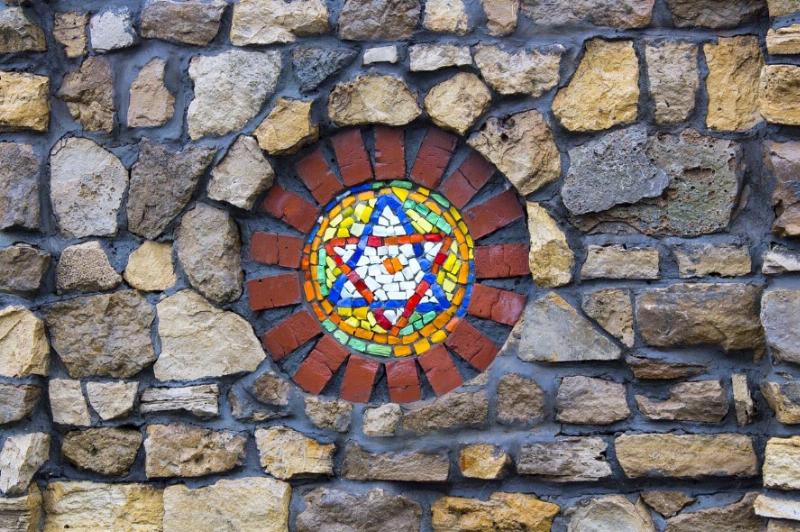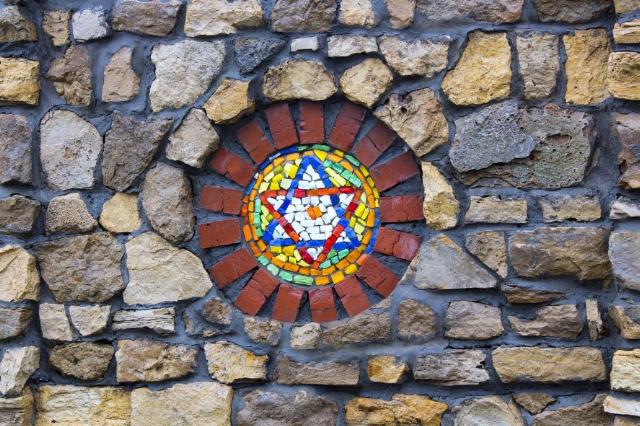


In “Maryland, Virginia, Falafel Inc. remove mural after outrage from Jewish community members” (06/26/25), the Washington Jewish Week (WJW), for whatever reason, came to the defense of the establishment that displayed the threatening mural.
I can understand WJW wanting to be fair and balanced, a rarity these days in the news. And proposing alternative views of the mural by giving the artist and the falafel company an opportunity to respond to each complaint about the mural is fair. But WJW also provided its own excuses for the mural, independent of the defenses offered by Falafel Inc. For example, where the mural showed a person wearing a keffiyeh, the headdress of allegiance to the Palestinian terrorist movement, WJW downplayed the threatening symbol by suggesting that it “represents Palestinian identity and unity.” There are plenty of other ways to characterize the keffiyeh, but the meaning offered by the WJW disturbingly hints that the Jewish newspaper admires the antisemitic terrorists.
It was also telling that the WJW omitted the gestalt, the overall theme, that the mural depicted — a theme that promotes the Palestinian narrative, which includes fabrications and manipulations that many in the Jewish community consider genocidal. For example, when Palestinians and their supporters shout “Free, Free Palestine,” they are saying, “Death, Death Israel.” And when they say, “From the river to the sea, Palestine will be free,” they are chanting for the destruction of Israel.
The mural, which shows a keffiyeh-clad man navigating by boat to the United States Capitol Building, is explained by a statement adjacent to the mural to mean that the individual is “arriving by boat in Washington DC in search of peace, dignity, and opportunity.” But there is no evidence for such a sympathetic interpretation. The Capitol Building is not a port of entry to the U.S. The usual portrayals of immigration to this country show people approaching the iconic Statue of Liberty, not confronting the U.S. seat of government.
Further, if the depicted boat is headed toward Washington, D.C., why are the demolished buildings in the mural (which supporters say represents the “destruction in Gaza from Oct. 7”) in front of the individual and not behind him? The setting looks as though a Palestinian is conquering our nation’s capital.
According to the article, Falafel Inc. said, “The same mural has been up for years at multiple locations around the DC metropolitan area without a single complaint or email.” But then what is meant by the many demolished buildings shown in the mural? They cannot represent the war in Gaza because the war didn’t start until October 7, 2023. The scene of destruction must be our beloved capital.
It could be argued that the theme of the mural is an imaginary Palestinian attack on the U.S. That would explain the entire work of art, including the keffiyeh. It is an appalling spectacle for any American, not just Jewish Americans. What makes the hateful message especially threatening is the current surge of antisemitism in the D.C. area, including the recent murder of two Embassy of Israel employees, shot dead at point blank range.
The WJW ends the article with an impassioned plea (some might say an ad) by Falafel Inc. that they aim to serve delicious food that’s affordable. They also claim a desire to create “a welcoming environment.” The Palestinian Hamas charter calls for the murder of Jews the world over. Their supporters gleefully shout, “Globalize the Intifada,” which expresses the goal of the Hamas Charter: to murder Jews.
Falafel Inc. is not the kind of “welcoming environment” that Jews like me are looking for. But it will have patrons like the Washington Jewish Week.
Dr. Michael Berenhaus is a freelance activist who works to combat anti-Israel bias in the media. He has been widely published in news sources such as The Economist, The New York Times, and The Washington Post.

Image: hendricjabs via Pixabay, Pixabay License.
